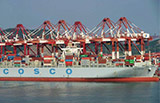Smaller cities fueling trend of online shopping
(China Daily) Updated: 2012-04-13 10:48The growing number of shoppers has fueled online shopping in China, and that has been aided by the rising costs of setting up physical stores.
 |
|
Sam Mulligan, founder and director of market research company DDMA. Provided to China Daily |
With the largest Internet population in the world, China also has the largest population of online shoppers - 195 million, far more than the 121 million in the US and 53 million in Japan, according to a report published by Data Driven Marketing Asia (DDMA), a China-based market research company.
Chinese consumers spent $125 billion online in 2011, making China the third largest online market in terms of online spending. The European Union is the largest market with $263 billion, followed by the US with $202 billion, data from DDMA shows.
Information provided by PwC shows that Chinese consumers shop online nearly 8.4 times every month, nearly four times more than their European counterparts, 5.2 times more than in the US and 4.3 times in the UK.
What really is more enticing to companies is that the Chinese shopping spree is not restricted to Beijing, Shanghai and Guangzhou, but helped largely by shoppers in cities as far-flung as Wuhan or Chengdu.
"From our research, we found that the increased spending on online shopping is not restricted just to established cities but also encompasses developing cities," says Sam Mulligan, founder and director of DDMA.
"It is the new consumers from the smaller cities who are really fueling the trend as many of the brands have yet to establish a physical presence, whereas online shopping offers more choices and brands. Customers have money to spend and they are online most of the time and this will drive the retail trade.
"The top 100 chain retailers in China have about 151,000 outlets, compared with 243,000 outlets in the US. Chinese consumers, particularly in developing urban markets, find more choices online and prefer it as the products are delivered the next day," he says.
"The rising rental and labor costs have also made the traditional retail channels expensive for many multinational companies in China," Mulligan says.
Retail rents in Shanghai and Beijing have increased by 9.5 percent and 13.5 percent respectively in 2011, according to DDMA statistics, which also adds that retail rents in tier-1 markets during 2012 are likely to see a 12 percent spike. Rents have also gone up in second- and third-tier cities, though not as much as that in the major cities.
Higher labor costs is another problem that many companies have been facing. Over the past three years, companies have witnessed nearly 40 percent hikes in payroll expenses for blue-collar workers. The figure for employing experienced white-collar workers rose by about 60 percent in many developed cities.
"By operating B2C websites, retailers need to spend less on people, but can realize better sales volumes," Mulligan says.
- Shipbuilder plans to integrate civilian, military businesses
- Cafe coffers are full, but coffee has no moxie
- Motorola Solutions to tap potential in two-way radio sector
- CNPC profits halved in 2015
- Hisense expands its global footprint
- Even China's tech billionaires not safe from phone scams
- China Vanke net profits surge in Q1
- Drone maker says industry should not let one chip company dominate

















